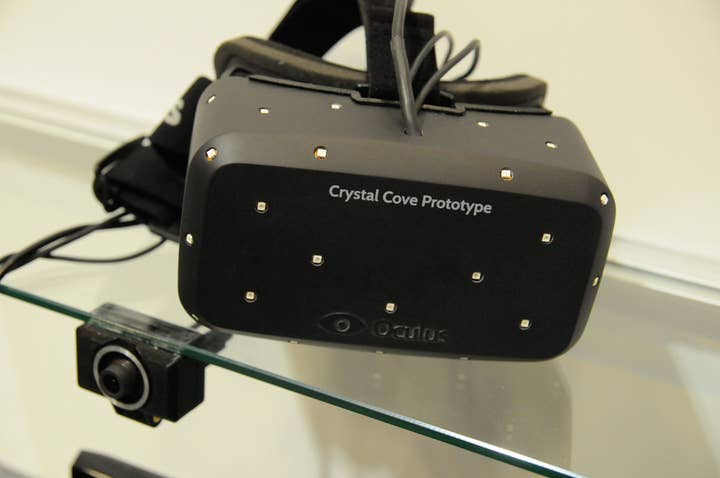Oculus games may command a premium price
CEO Brendan Iribe would not be surprised to see Oculus games cost more than $60 - he also says "the age of 2D monitors has run its course"
The Oculus Rift could open up new realms of immersion for gamers - but those experiences may come with a price.
Brendan Iribe, CEO of Oculus, notes that - as a hardware manufacturer - his business has no say in what software companies will charge for Oculus-enhanced games, but admits he would not be surprised to see them come at a premium price.
"It's going to be up to the developers," he says. "There will be some who make casual, simpler experiences - maybe bite sized. There are going to be Indie developers that make bigger experiences. And there are going to be bigger teams that make really big experiences. ... And some that we've seen early prototypes of... Well, we've seen some that, boy, would I pay a lot to get that experience in virtual reality."
Aaron Davies, director of developer relations at Oculus, agrees.
"In VR, suddenly objects have value - and scale and size and depth and I think there will be opportunities for developers to monetize them," he says.
Noticeably higher retail prices for software could be one of the few things to derail current gamer excitement about VR. Consumers are still smarting from the industry's move from $50 to $60 in 2005 - and EA incurred player wrath last February by suggesting they might jump to $70 with the launch of the Xbox One and PlayStation 4.
"They'd better deliver if they're going to charge more than $50 or $60 for a game"
Brendan Iribe
Iribe noted that pricing in the game industry tends to swing. Prices spiked with the launch of the last generation consoles, then swung to the other end of the pendulum with the rise of mobile gaming. He sees the rise of virtual reality as not an extension of PC gaming, but something different - which opens the door for them to move back in the opposite direction.
"VR is a fundamentally different experience," he says. "This is the next generation of computing in a very big way. ... This is something that's going to change so many things."
However, he notes, raising prices also raises risk for developers.
"They'd better deliver if they're going to charge more than $50 or $60 for a game," he says.
Davies notes that the higher prices - if they come at all - may not be done in a clumsy fashion, such as hiking the initial retail price. Instead, he points to the free-to-play model, where microtransactions make it less painful to pay (and the customer may not realize they're paying more until much later).
"The whole concept of charging a premium is somewhat outdated," he says. "It's not to say it's going to be upfront. It could be this is going to be an experience you get dialed into. We'll see how it monetizes. ... If you create content or an experience that someone is passionate about, you're creating a lifestyle for them. And they'll pay for that."
"If people are willing to spend a lot of money on VR games, it obviously means we're doing something right," says Iribe.
Davies and Iribe note that they're speaking in hypotheticals. At present, the company still isn't even willing to talk about the Rift as a commercially available product. It's still in the R&D phase, says Iribe, who won't even commit to a 2014 release for the product.
The Crystal Cove prototype (which won Best in Show at this year's CES Awards) does give a few hints as to what we can expect when this thing finally does hit its release milestone, though.

The unit being shown at this year's CES relied on a camera attached in front of the user to work. And Iribe said barring an unforeseen technological miracle, that's not likely to change.
"While we're not talking about the consumer unit, if it does [require the camera], we'll bundle that in," he says.
To date, Oculus has shipped more than 50,000 developer kits for the Rift, says Iribe. The company has gone from 7 employees a year ago to more than 70 today. The past year has also brought about several improvements to the unit.
The Crystal Cove prototype, as has been widely reported, offers positional tracking (thanks to that camera), giving users six degrees of visual freedom. And it has significantly reduced motion blur.
Latency has been improved as well. The developer kits in people's hands have a latency of about 50-60 milliseconds. Crystal Cove got that down to between 30-40 milliseconds. The goal for launch, says Iribe, is 20 - with the hopes of further reducing that in later models.
"We're not going to ship until we have a version that delivers a highly immersive, comfortable experience at a low price," says Iribe. "I don't mean just the foam padding and things like that. The experience of virtual reality has to be comfortable. VR has never been close to comfortable. We're confident we will deliver a very comfortable experience for version one. It's my belief that the age of 2D monitors has run its course."

